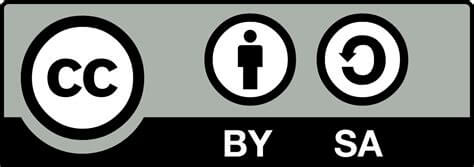
BiodiverCities
The toolkit
The improved BiodiverCities I toolkit consists of two parts: a bee hotel for cavity nesting bees and an the ground unit for underground nesting bees. Both parts are designed with "do it yourself" principle in mind: using materials easily available to everyone, simple methods of connections and on-site assembly. On this page you will find instructions for making these structures, necessary files and general information about what the bee hotels are, where and how to install these habitats correctly, how to take care of them and what mistakes to avoid.
The toolkit
Instructions for making the toolkit can be found here:
InstructionsThe toolkit is made open-source under CC-BY-SA 4.0 license. You can easily download all the working files from here:
Files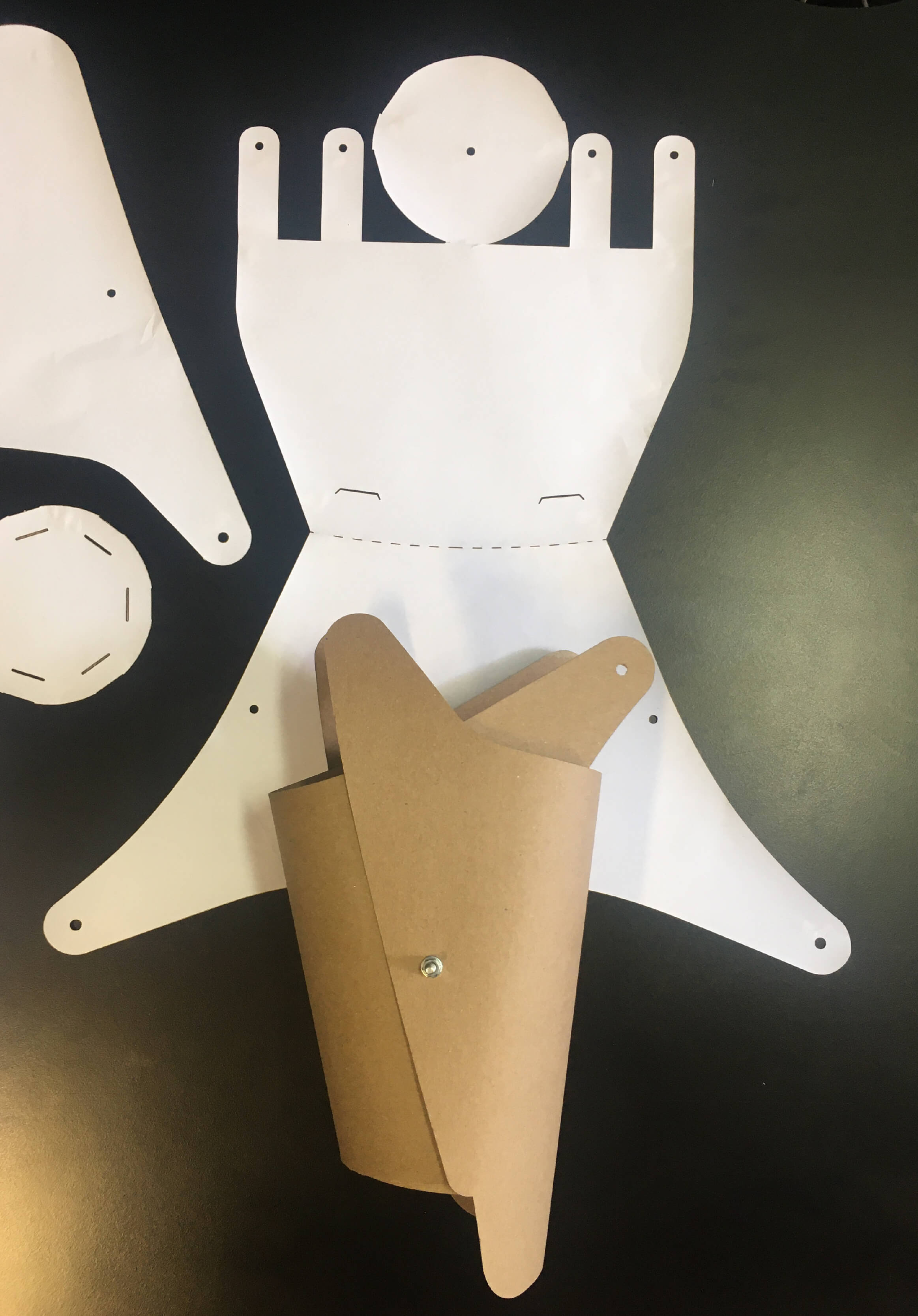
What are bee hotels and how do they work?
Bee hotels are structures where wild bees can build their nests. Most of these hotels are dedicated to cavity nesting bees, but structure for underground nesting bees are also on the rise. In rapidly expanding cities, parks and green spaces are often heavily managed, so wild bees often lack suitable places and materials to build their nests. This is why bee hotels can offer nesting places and become beneficial for the wild bees. More information can be found here.
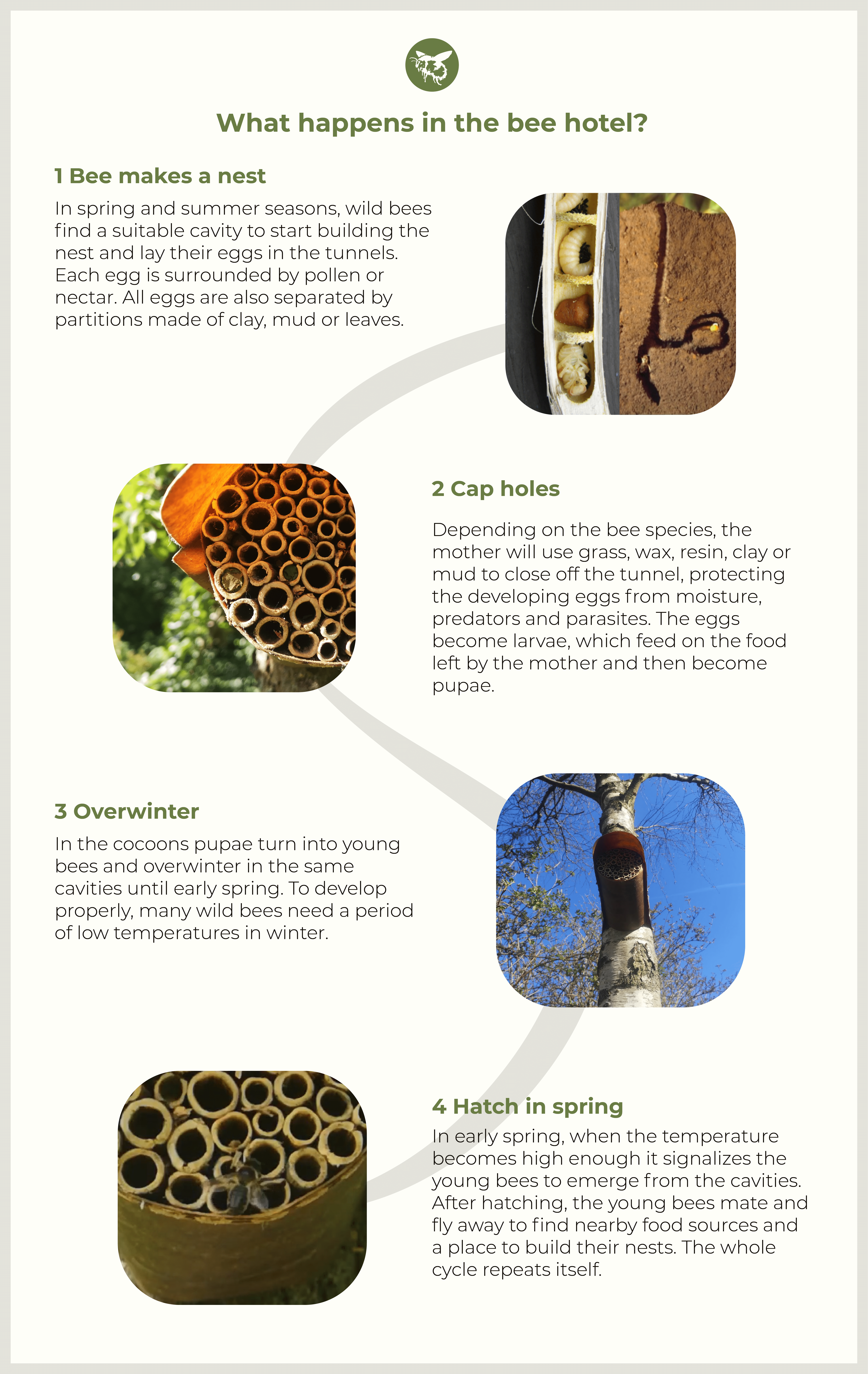 What happens in the bee hotel. Adapted from EALT (2018), updated
using information from Mader et al., (2010).
What happens in the bee hotel. Adapted from EALT (2018), updated
using information from Mader et al., (2010).
FAQ: Where and how should the bee habitats be built?
In this section, we answer the main questions regarding the DIY bee habitats, give advice on how and where to build them, and how to care for them.
I made one of the habitats, where is the best place to install it?
For a habitat to be useful, it is important to place it in the right place. It is most suitable in green areas, where there are various types of flower blossoms nearby for bees to feed on, as well as building materials for creating nests, such as soil, leaves and other natural materials. Inspect the area and assess:
1. Do you see many bird nests or nests around? If so, your habitat will most likely become a restaurant for these birds when the bees start visiting here, it is worth looking for another area.
2. Are there cultivated fields or commercial agricultural activities in the vicinity? If so, strong pesticides will likely be used in the area, which will kill all the flying insects around. It is worth rethinking whether you want to install an insect habitat here.
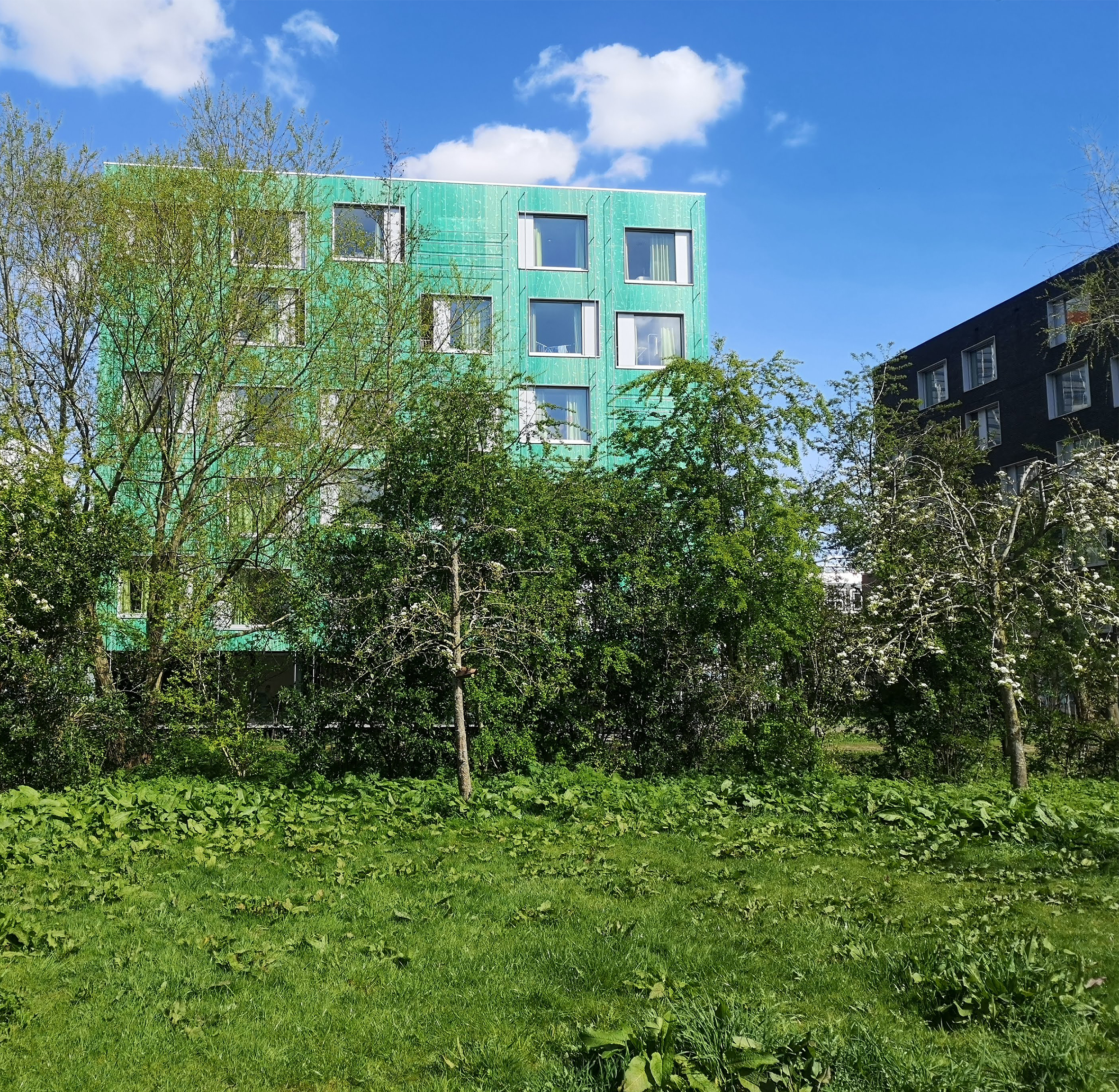 The location of one of the hotels. Delft, The Netherlands.
The location of one of the hotels. Delft, The Netherlands.
What is the best way to install a bee hotel for cavity nesting bees?
This toolkit element is designed to be attached to the tree by wrapping it tightly around the trunk (recommended trunk diameter: approx. 20cm). The attached structure should not sway or wobble, but should stay firmly in place.
The bee hotel entrance should face south and should receive at least some direct sunlight. Bees, like all insects, are cold-blooded, so they need warmth to be able to fly and search for food.
I installed the bee hotel, I don‘t need to do anything else, right?
Wrong. The bee hotels are called bee hotels for a reason: the cavities must be replaced or cleaned every year after the young bees have emerged from their nests. When left unattended for a couple of years in a row, the bee hotels can become a paradise for parasites and harm or kill other wild bees developing in them.
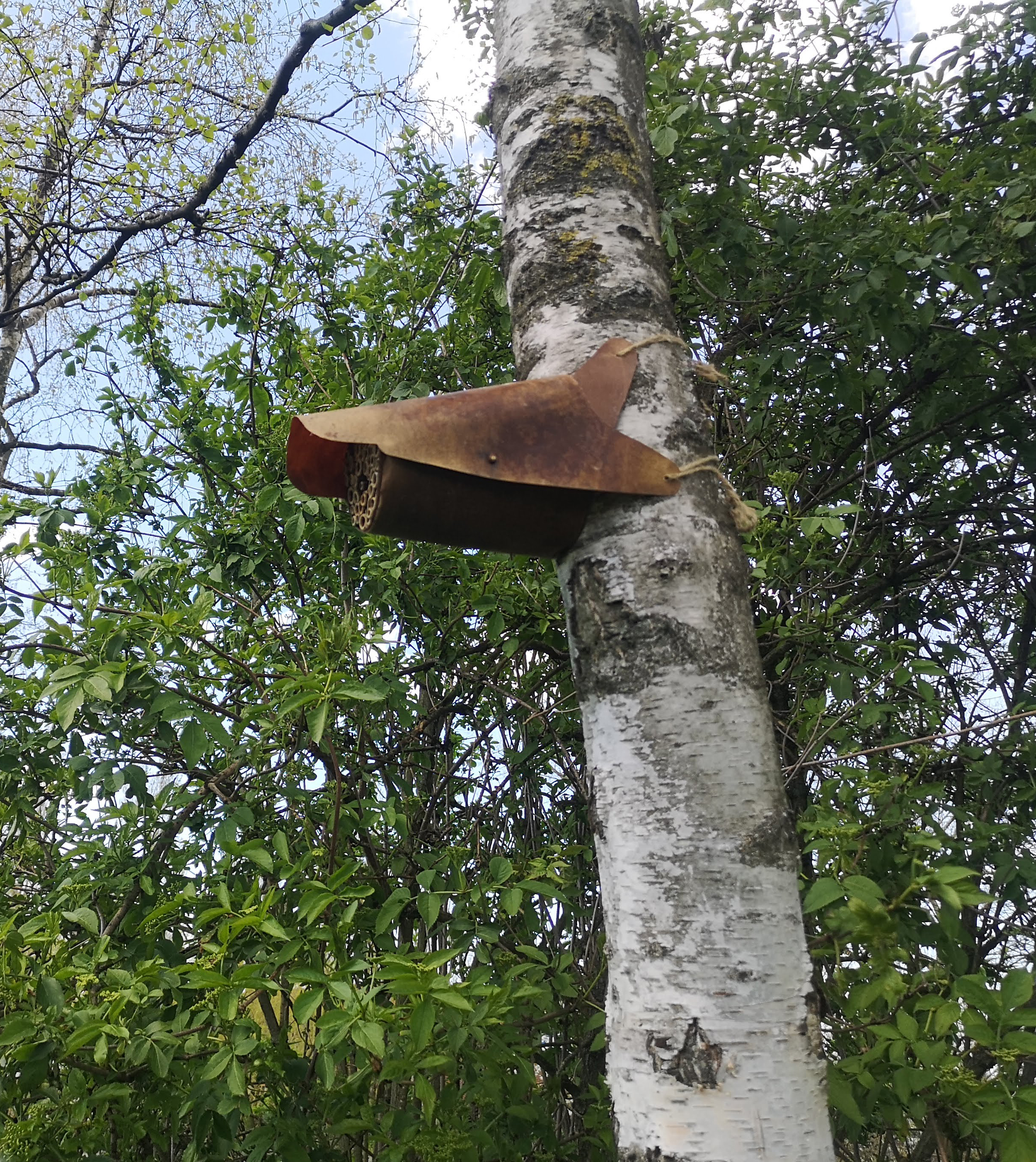 The Bee Hotel faces south.
The Bee Hotel faces south.
What is the best way to install an underground nesting bee habitat – the ground unit?
This toolkit element is designed to be put on the ground. It is advisable to face the slope side to the south and choose a place that receives more sun.
I installed an underground nesting bee habitat, do I need to do anything else?
The element can remain in place for several years or more, depending on how much and how often it is used by the wild bees. It is advisable to observe how the ground element withstands environmental elements, such as rain or snow. If some fixes of the soil are necessary, do them only in spring, when young wild bees have emerged out of their cavities.
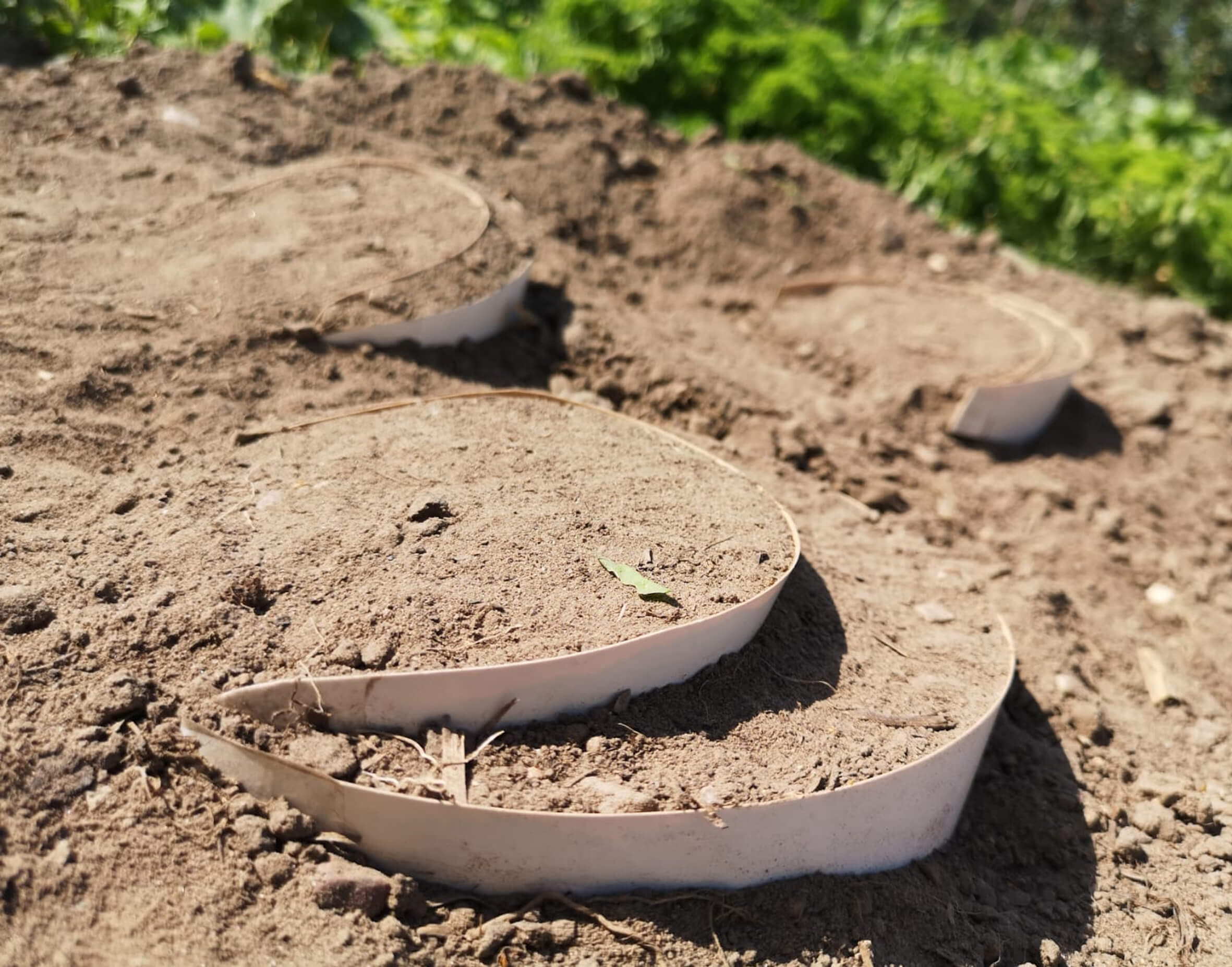 Model of the Ground element.
Model of the Ground element.
I don't want to make a bee hotel myself, but would like to buy it. What should I pay attention to?
Currently, the market is full of various types of bee hotels, which often do not meet ecological requirements and can do more harm than good to the wild bees: too short cavities that cannot be removed, insufficient protection from rain, unsuitable materials used for the production of cavities and many other design flaws. However, if you search and know what to look for, you can also find suitable design habitats. More information about design mistakes and how to avoid them can be found here or in the chooser chart bellow.
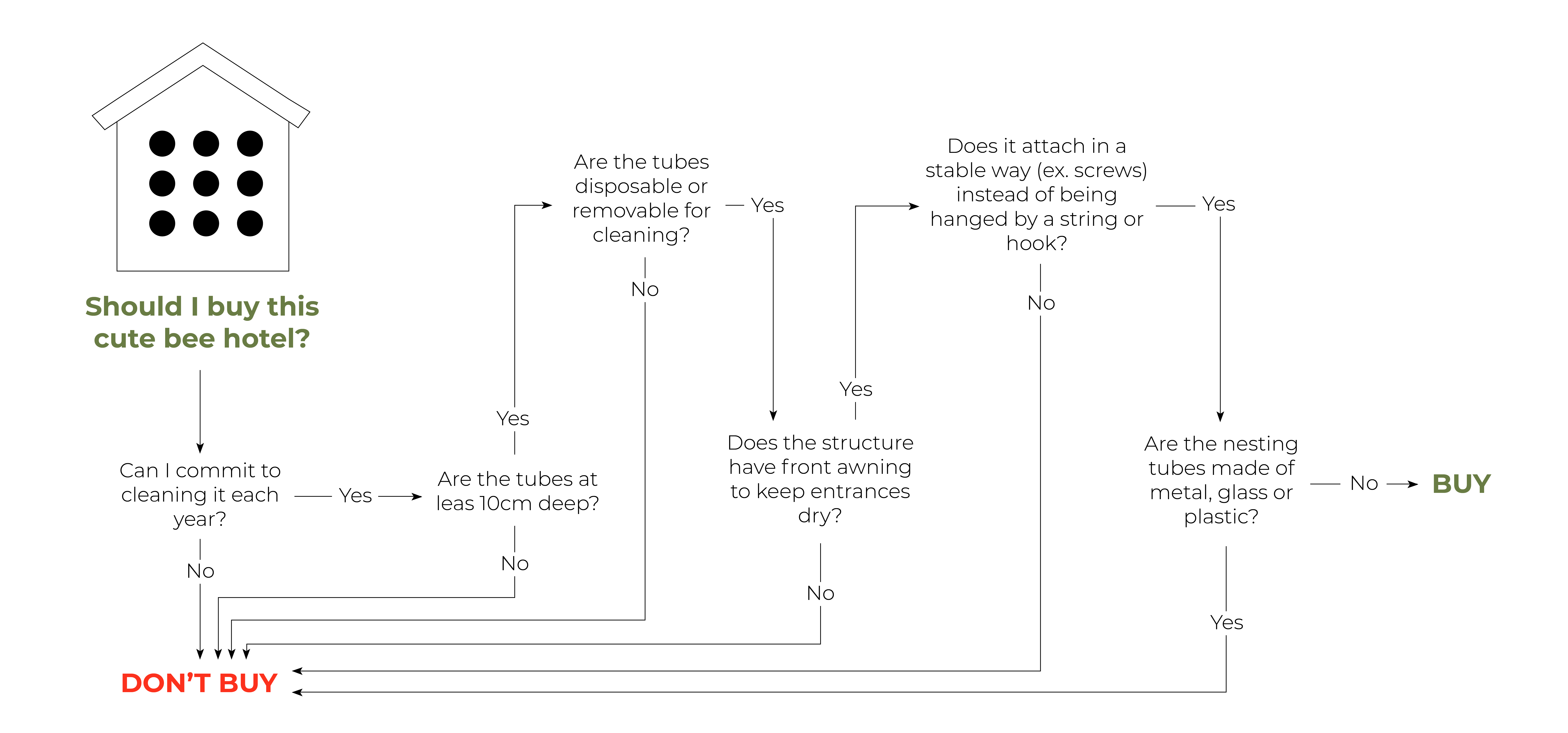 Chooser chart for buying a bee hotel. Image adapted from
Purrington (2019).
Chooser chart for buying a bee hotel. Image adapted from
Purrington (2019).
References:
Mader, E., Spivak, M., & Evans, E. (2010, September 29). Managing
Alternative Pollinators: Lifecycle. SARE Outreach.
https://www.sare.org/publications/managing-alternative-pollinators/chapter-six-mason-bees/lifecycle/
Purrington, C. (2019). The horrors of mass-produced bee houses.
Retrieved December 11, 2022, from
https://colinpurrington.com/2019/05/horrors-of-mass-produced-bee-houses/
EALT. (2018, October 5). Bee Hotel Winterizing (Hint: Don’t do
anything!) and Maintenance. Edmonton & Area Land Trust. Retrieved
December 11, 2022, from
https://www.ealt.ca/blog/bee-hotel-maintenance
Team:
- Justė Motuzaitė
- Kontryna Lenkauskaitė
- Lorenzo Piazzi
- Modestas Stankaitis
- Rūta Valušytė
- Niccolò Lelli
- Hari Prasanna Manimaran
- Giuseppe Donvito
- Justina Klėjūtė
Contacts: info@designfriends.org
Developed and distributed under CC BY-SA license
